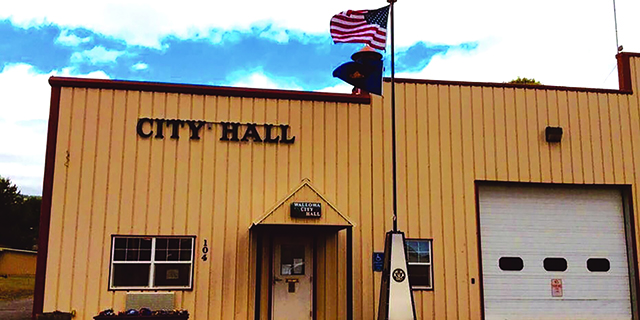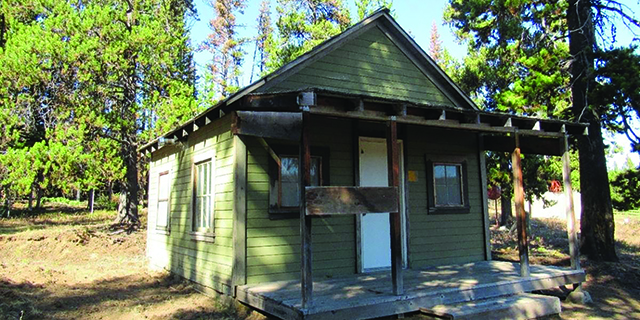Golf course needs revisions
Published 10:18 am Tuesday, October 24, 2017
My apologies in advance to any readers who have no interest in golf. For those of you who have a casual onlooker’s curiosity or who make some frustrated effort to master the game, I offer my assurance that I am more an addict than an expert at this diabolical invention.
On a good day, I am what is known as a “bogey golfer,” which means that my average score per hole is typically one over par (the score a pro would be expected to shoot). I feel triumphant any time I score below 90 on an 18-hole round.
Trending
My introductory comments will be intended more for those of you who are unfamiliar with our local nine-hole course, Alpine Meadows. My closing diatribe and suggestions will be aimed more for the local golfers who, like me, have struggled with one of our course’s most challenging holes.
Alpine Meadows is a beautiful course on the outskirts of Enterprise, situated on relatively level acreage within the boundaries of rolling hillsides, ranches and mountain backdrops.
It is commonplace to see deer grazing on fairways, to be accompanied by low circling birds or even to spot an occasional cow or coyote that wanders onto the grounds.
The course is well maintained, and the greens roll fast and true. They are exceptionally challenging both for pitching to and for putting on, because most greens are slightly dome-shaped and taper off toward the edges. The result is that many decent approach shots will trail off the green, while downhill and sidehill putts require a careful combination of the proper read and speed.
A creek winds its way through the course, and crosses or borders holes 1, 2, 3, 7, 8 and 9. A pond has been added in the past few years at the intersection of holes 3, 4, 6 and 7. The creek is far more likely to come into play than the pond, especially where it crosses the seventh and ninth fairways.
For right-handed golfers like me who play with a left-to-right slice, the out-of-bounds to the right of holes 6, 7, 8 and 9 pose a challenge, as do the trees and creek, which crowd the tees of the left side of the third and ninth holes.
Trending
But my main nemesis at Alpine Meadows (not counting Greg Oveson, the course superintendent, who has an intimate knowledge of every ridge and knoll on every green and a knack for finding the most dastardly pin locations imaginable), is the seventh hole.
If you check the scorecard and the rating of difficulty for each hole, you will find that 7 is ranked as the third hardest hole on the course, trailing behind toughest rated 9 and second place 2. But especially since the seventh green was reconstructed several years ago, my experience has been that 7 easily surpasses 2 and might even be harder than 9, primarily because it simply is not as fair.
In my opinion, while 9 is a tough hole, there is nothing unfair about it. You need to hit a good drive that avoids the trees and creek on the left and the OB on the right, but the fairway is wide enough to do that.
A well-aimed second shot will get you over the creek if you can avoid hitting the tree that hangs over the creek to the left of the fairway. Then with a chip and a two-putt, a golfer with my ability can earn a well-deserved bogey.
But 7 is a different challenge altogether. The tee shot that avoids the pond on the left and the OB on the right is not usually problematic, because the fairway is plenty wide. But I think the most difficult shot of the entire round is the approach shot that follows.
The tall tree that guards the left half of the green probably blocks more shots every day than a good goalie, while the creek that snakes around the left side and across the front of the green swallows any ball that winds up short.
The OB on the right adds two strokes to your score if you miss the green by even a few feet on that side. And since the reconfiguration of the green, which is now an assortment of humps, ridges and swales that mysteriously unite five plateaus, there is no guarantee that even an approach shot that lands on the green will not bound into the hazard area just five yards behind the green.
Then again, even if your pitch shot does stay on the green, good luck avoiding a three-putt on that mad scientist’s, roller-coaster surface.
Respectfully, I offer several suggestions to the board of directors and the greenskeepers of Alpine Meadows with the aim of making 7 more fair.
Improve and water the fairway in front of the creek to make that area more receptive to layup shots.
Let the fringe grow a little more to the right of and behind the green so that shots that land on the green are less likely to roll OB or into the back hazard.
Border the area along the outskirts of the right fringe with railroad ties or a short stone wall so that shots that land on the green cannot easily bounce OB. (As an avid viewer of pro golf on television, I can never recall seeing any hole with an OB area so close to a green on any other course.)
Weed-eat and groom an additional five yards behind the green to increase the fringe area in front of the back hazard.
I would personally volunteer my labor to install the railroad ties or to remove stones. It would be well worth the heartache and strokes that I would eventually save.
When he is not traveling, John McColgan writes from his home in Joseph.









